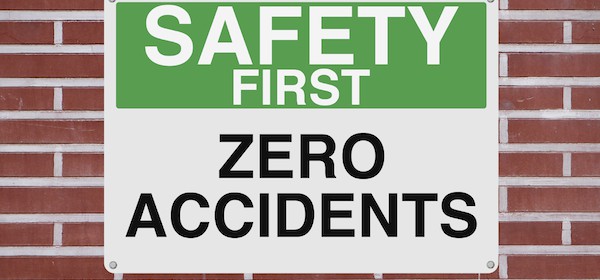The workplace — no matter if it’s a factory that specializes in manufacturing or an office setting focused on administrative work —should ALWAYS feel safe. And for this reason, OSHA requirements mandate this, requiring all business to provide safe work conditions or else face OSHA violations and potential monetary fines.
This idea of having an overall safe work environment is spelled out in the OSHA ‘General Duty Clause,’ which is described as:
Under the General Duty Clause, Section 5(a)(1) of the Occupational Safety and Health Act (OSHA) of 1970, employers are required to provide employees a place of employment that “is free from recognizable hazards that are causing or likely to cause death or serious harm to employees.”
Serious OSHA violations can carry a penalty from $7,000 up to $70,000 per citation. If there are injuries occurring, or a situation that could lead to an injury, then there is a possibility that this situation violates the OSHA General Duty Clause regarding safety and health.
Examples of hazardous situations leading to citations under the General Duty Clause are:
- Hoists without load ratings, with missing or damaged hook latches, unlabeled or damaged controls, improperly adjusted limit switches, and/or inadequate inspections
- Pipe threading machine with no automatic shut-off
- Repeated lifting above shoulder height
- Frequent twisting of the body while shifting a load
- Conveyor system with no functioning emergency stop devices
- Below-the-hook lifting devices that have not been inspected and/or are without rated load markings
- Forklift truck used to support employees at heights without adequate securing or fall protection
- Improper storage of highly reactive chemicals
- Standing for long periods without adequate support
- Hydraulic auto lifts used without adequate locking devices in place
- Risk of violence against community workers
However, a challenging aspect of the OSHA General Duty Clause is that it does not specify exactly what employers are required to do to comply — making it challenging to follow through with OSHA compliancy. Instead, it functions to cover those areas where explicit written regulations do not exist.
Employers who receive General Duty Clause citations should examine and determine if OSHA’s basis of authority contains safety or hazard warnings that would put the employer on notice of an actual safety warning or hazard. If not, OSHA will have difficulty establishing that the employer recognized the hazard.
To prove a General Duty Clause violation, OSHA must:
- Establish a hazard exists
- The hazard must be recognized by the employer or its industry;
- Show that the hazard causes, or is likely to cause, serious harm or death;
- Identify that the hazard must be correctable via a feasible means
In order to help protect against violation of the OSHA General Duty Clause, employers should:
- Review manufacturers’ manuals to identify specific safety or hazard warnings and incorporate them in employee safety policies and procedures
- Review industry consensus safety standards applicable to the industry
- Identify safety recommendations to be incorporated in employer safety policies and procedures
- Conduct employee training and enforce compliance; include proper documentation
Having thorough operational safety training, risk management procedures, and applying best practices can help to improve a company’s loss prevention program by ensuring employee safety. It can also help a company reduce its exposure to OSHA violations and OSHA General Duty Clause violations.
For further safety tips and information on how to bolster workplace safety, comply with the OSHA General Duty Clause, and avoid OSHA violations, visit NARFA’s safety blog, or contact us. As a benefits administration company with years of experience in the automotive, roads, and fuel industries, we’re experienced with workplace safety compliance and we’re happy to help you out in any way we can!
Recent Posts
IRS Guidance on Nutrition, Wellness, and General Health Expenses
The Internal Revenue Service (IRS) has recently highlighted that costs associated with nutrition, wellness, and general health do not typically qualify as reimbursable medical expenses [...]
HSAs Today and Every Day: A Triple Threat Against Rising Healthcare Costs
The healthcare landscape is constantly evolving, and in 2024, rising costs remain a top concern for both employers and employees. Fortunately, Health Savings Accounts (HSAs) [...]
April Showers Don’t Cause Accidents (Distracted Driving Does): Stay Safe on the Road This Month (and Every Month)
Spring is here, and with it comes April's designation as Distracted Driving Awareness Month. While the changing seasons and blooming flowers might tempt you to [...]




